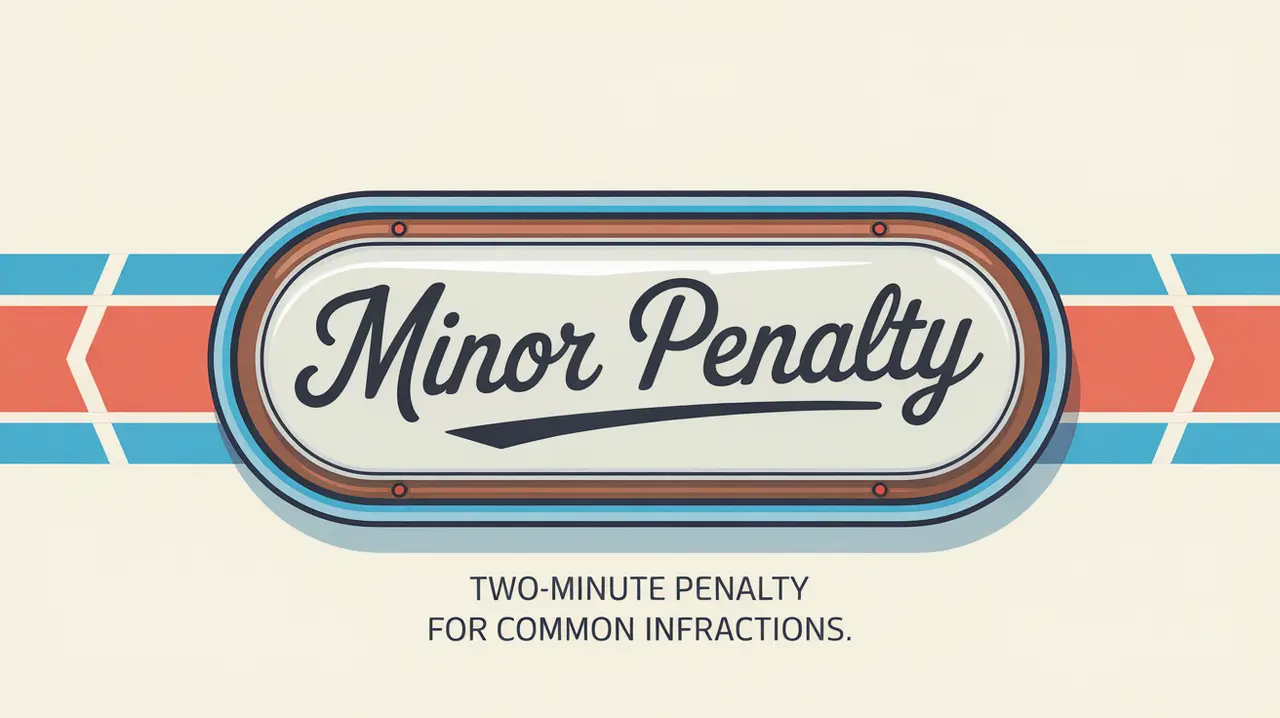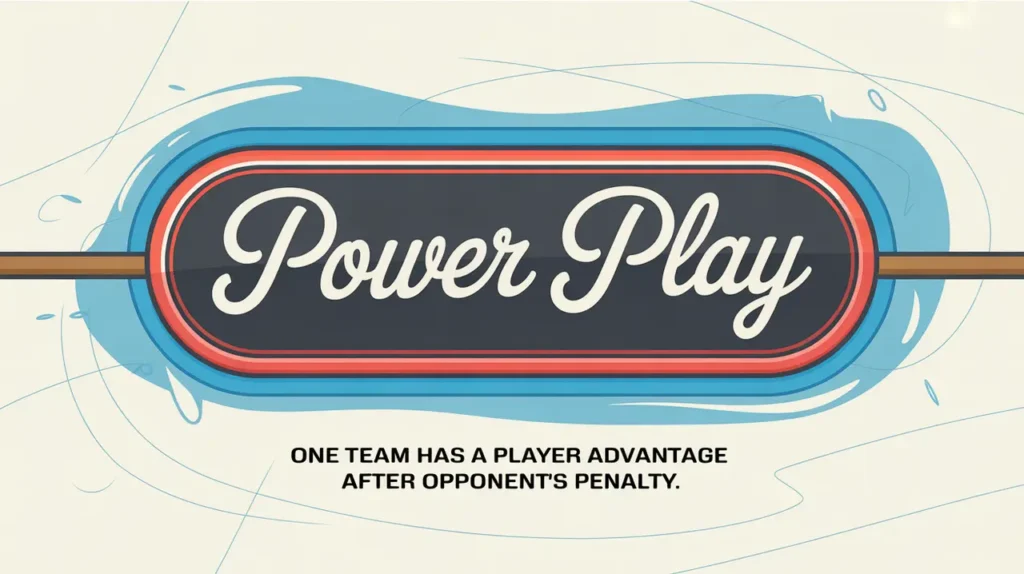Jim’s Intro to Minor Penalties
Hi folks, Jim here, the only commentator who once tried to argue a minor penalty from the press box like the ref could hear me. Spoiler: he couldn’t.
What is a minor penalty?
A minor penalty is a two-minute punishment assessed to a player who breaks one of hockey’s standard rules, such as tripping, hooking, or high-sticking. When a player takes a minor, they sit in the penalty box for two minutes, and their team plays shorthanded during that time. If the opposing team scores on the ensuing power play, the penalized player is released early and the penalty expires. Minor penalties are the most common type of infraction in hockey and play a major role in shaping momentum.
How does it work?
Minor penalties follow a clear sequence:
- Infraction: A player commits a rule violation.
- Referee’s Arm Up: The official signals the penalty but doesn’t stop play until the offending team gains possession (delayed penalty).
- Whistle and Assessment: Once play stops, the player heads to the penalty box and serves the full two minutes, or less if a power play goal is scored.
- Faceoff: Play resumes with a faceoff in the offending team’s defensive zone.
There are two types of minor penalties:
- Standard Minor: Two minutes. Ends early if a power play goal is scored.
- Double Minor: Four minutes (usually for infractions that cause injury, like a high stick drawing blood). Split into two two-minute segments; if a goal is scored during the first, the second begins immediately.
Common Examples of Minor Penalties
- Tripping
- Hooking
- Holding
- Interference
- High-Sticking
- Slashing
- Boarding (minor if not severe)
- Too Many Men on the Ice
- Delay of Game (e.g., puck over the glass)
These penalties keep the game safe and structured, discouraging lazy or dangerous play.
How do you make good decisions with it?
Good minor penalty decisions are mostly about not taking them unnecessarily.
- Stay Disciplined: Avoid stick infractions caused by poor positioning. Move your feet instead of reaching.
- Know the Situation: Taking a penalty in the offensive zone far from the puck is a classic momentum killer.
- Smart Penalties: Occasionally, a minor is worth it, like breaking up a clear scoring chance, but those should be calculated, not careless.
- Awareness on the PK: Penalty killers must stay sharp, avoid more infractions, and clear the puck efficiently.
How do you master them?
Mastering minor penalties means minimizing them while maximizing your team’s response when they happen. Skilled players position themselves well, keep their sticks under control, and read plays before they need to react desperately. Teams practice penalty killing systems to turn a disadvantage into a strategic stand, pressuring puck carriers and forcing turnovers.
What does it look like when done right?
Disciplined teams rarely take back-to-back minors, don’t give away offensive zone penalties, and kill the ones they do take with confidence. Penalty killers are synchronized, the goalie stays sharp, and the two minutes often turn into a momentum swing instead of a setback.
Commentator’s Corner
Jim’s Take
I’ve seen games unravel because of lazy stick penalties in the third period. Two minutes can feel like forever when you’re pinned in your own end.
Parent Tip
Teach young players proper body positioning and stick control early. Most minors come from reaching instead of skating.
Player Tip
Think before you reach. Good angles and strong skating keep you out of the box, and smart penalty killing earns trust fast.
A Final Thought
Minor penalties may be short, but they shape games. Discipline keeps you out of the box, awareness keeps your team steady when you’re in it, and smart play turns those two minutes into a test your team can pass.









